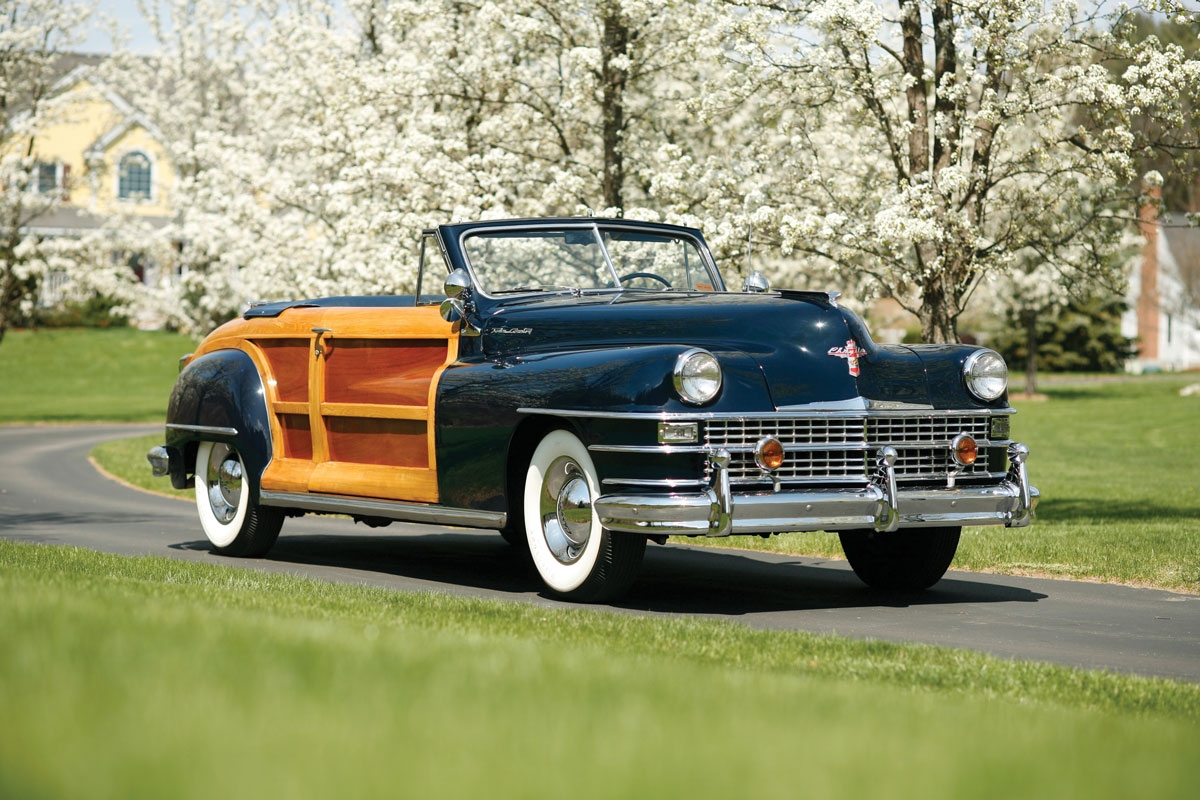A woodie with Full Classic status
This 1948 Chrysler Town and Country shows only 77,630 miles, which is believed to be from new. The interior is finished completely in striking blue leather upholstery, a rare option in 1948 (supposedly only 10% were ordered with the leather option). It is complemented with gray Wilton wool carpeting and is well appointed with a plethora of factory-correct accessories including the dual-cowl-mounted spotlights, dual side-view mirrors, dual amber-colored fog lights, rear-view mirrors, a deluxe push-button AM radio, a clock, optional dual Mopar Model 54 heater units, front and rear bumper guards, and wide whitewall Firestone Deluxe Champion tires.
This car was reported to have been the subject of a restoration prior to arrival in this ownership a decade ago.
In 2007, this attractive convertible woodie was shown at the Newport Concours in Rhode Island, where it rather appropriately received the Best Newport award. That same year, it gained second in the Post War Convertible Class at the Stowe Fall show. More recently, it was exhibited at the 2012 Boston Cup, garnering the City of Boston Commissioner’s Cup.

